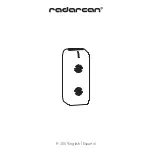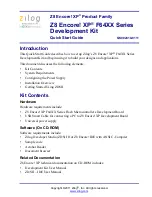
TC1796
Peripheral Units (Vol. 2 of 2)
Controller Area Network (MultiCAN) Controller
User’s Manual
22-120
V2.0, 2007-07
MultiCAN, V2.0
22.5.8
Reference Message
The reference message object has a special role in the TTCAN system. It is the first entry
in the message object list for the TTCAN node (node 0 in the TC1796).
22.5.8.1 Differences to Normal CAN Messages
There are several differences between the behavior of a reference message and a
normal CAN message:
•
If a reference message is disturbed by an error during transmission, it is retransmitted
immediately.
•
If a reference message loses arbitration, it is not retransmitted, but the message on
the bus is received (arbitration of potential time masters).
•
For reception, no identifier bits (except the 3 least significant bits ID[2:0]) use an
acceptance mask (must be set by software). The entire identifier of the latest correct
reference message on the bus is stored in the reference message object.
•
For reception, the 3 least significant bits of the identifier always use the acceptance
mask 000
B
(must be set by software).
•
Its transmission request, indicated by the flag TTSR.REFTRG, is related only to a
reference time mark or to an external event (for synchronization). If a correct
reference message is received while REFTRG is set, REFTRG is automatically
cleared.
•
For transmission, the identifier bits of the reference message object are taken, except
the 3 least significant bits (ID[2:0]). They are taken from the bit field TMCR.TMPRIO.
•
The corresponding parts of its eight data bytes are directly connected to the TTCAN
internal values (cycle_count, master_ref_mark, etc.) according to the selected level
of the TTCAN protocol. The remaining bytes are available for free use.
•
The DLC of a reference message to be sent out is determined by the bit field
TTCR.RMDLC. This bit field must be at least 1 in TTCAN level 1 and at least 4 in
TTCAN level 2.
A reference message object can be selected to be a time master (a potential time
master) or a receiving device (no time master).
The reference message object must be initialized as a receive object (but the
transmission of this object leads to the reference frame). This is due to the fact that the
reception of a reference message is determined by the normal receive acceptance
filtering, whereas the transmission is a specific action, triggered by the TTCAN
extension.
Reference messages can also be transmitted by time masters that are in S2 error state
or after the Init_Watch_Trigger has been reached.
















































